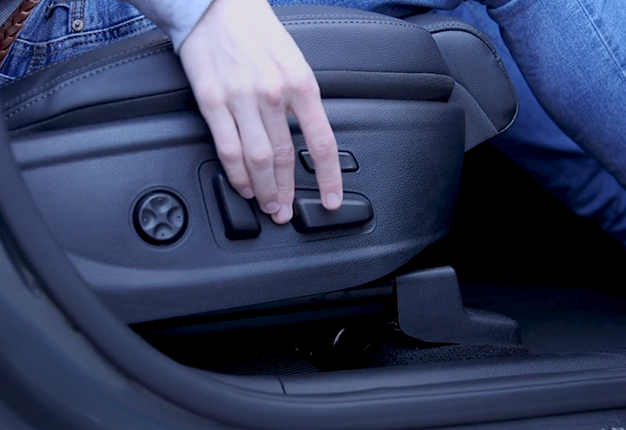An achy back, stiff neck, sore shoulders while travelling is very common. A poor driving posture can lead to an increased risk of discomfort in the neck, back, shoulders, arms, wrists, fingers, legs and feet.

You can alleviate many posture-related discomforts with proper adjustment of the driver’s seat and mirrors.
Here are a few suggestions,
1. Support Your Back
Slide your tailbone as close to the seat back as possible. Aim for a two- to three-finger gap between the back of your knees and the front of your seat. If your vehicle doesn’t allow for the proper position, a lumbar or back cushion may help.
2. Raise Your Hips
If you can, adjust your “seat pan” (the part you sit on) so that your thighs are supported along their entire length and your knees are slightly lower than your hips. This will increase circulation to your back while opening your hips.
3. Avoid Sitting Too Close
You should be able to comfortably reach the pedals and press them through their full range with your entire foot.
4. Get the Right Height

Make sure your seat raises your eye level at least three inches above the steering wheel while allowing enough clearance between your head and the roof.
5. Seat Angle
The angle of your seat back should be a little greater than a perpendicular 90 degrees. At 100 to 110 degrees, the seat will put the least pressure on your back. Leaning too far back forces you to push your head and neck forward, which can cause neck and shoulder pain and tingling in the fingers.
6. Set Your Headrest
Set the top of the headrest between the top of your ears and the top of your head; it should just touch the back of your head when you’re sitting comfortably. The headrest is important in reducing whiplash injuries in the event of a collision.
7. Use Lumbar Support
If your car has adjustable lumbar support, set it (using both the front-back and up-down controls) so you feel an even pressure from your hips to your shoulders. If your car doesn’t have automatic support, a lumbar pillow or even a rolled-up towel can help.
8. Adjust Your Mirrors

Prevent neck strain by making sure your rear-view and side mirrors are properly adjusted; you should be able to see the traffic behind you without having to crane your neck.
9. Take Short Breaks
Even when you’re perfectly sitting in the driver’s seat, fatigue is bound to set in, especially when you’re driving for long periods. Listen to your body. And take periodic breaks: Park safely and stretch.
Disclaimer
The Content is not intended to be a substitute for professional medical advice, diagnosis, or treatment. Always seek the advice of your physician or other qualified health provider with any questions you may have regarding a medical condition.